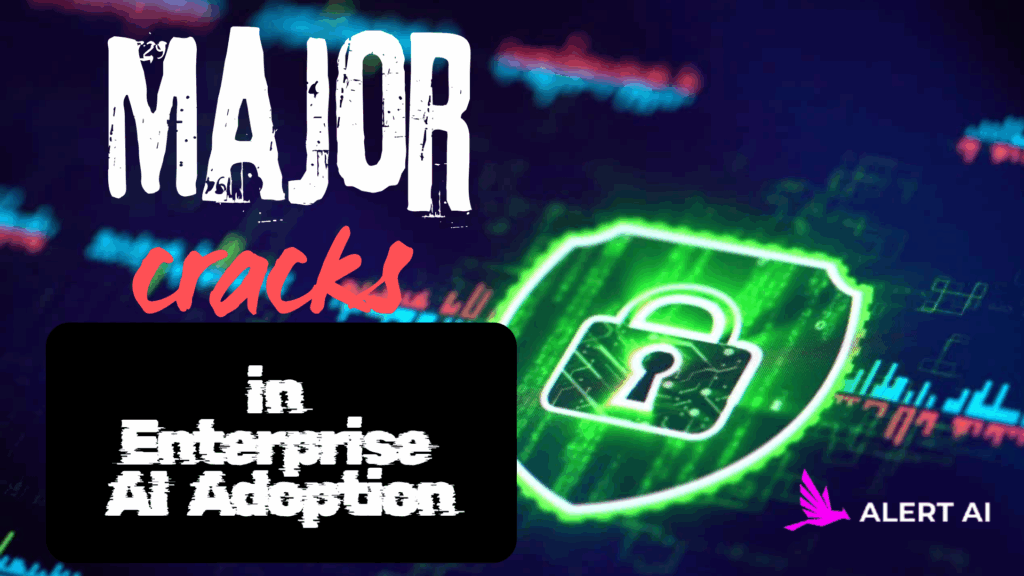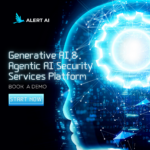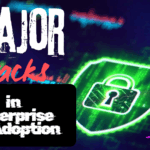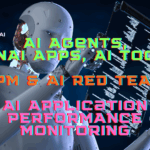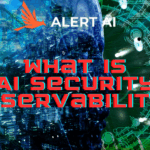Enterprise AI: Incapacitated Security: How exisitng network, cloud, data Security solutions falling short.
Security pundits warning against Reckless push of Enterprise AI tools usage is Risky – Incapacitated Security and How current Network and Data security solutions Fail to Protect and Why new Security tools needed for AI adoption.
“Enterprise AI adoption outpaces security readiness: mind the gap!” Reckless push of Enterprise AI tools usage is Risky – Incapacitated Security and How current Network and Data security solutions Fail to Protect and Why new Security tools needed for AI adoption.
“AI Security is now mandatory. Previously, if we secured the Cloud, Network or Edge, we were fine, but now that is not enough. Enterprise AI usage needs security that could protect any AI access and AI interactions across AI Model, Tools, Data, or APIs.”
AI adoption skyrockets, but security lags behind
The whirlwind of innovation surrounding Artificial Intelligence (AI) has captured the attention and Venture Capitalists (VCs) who are pouring funds pushing aggressive adoption of AI tools within enterprises. This rapid deployment, however, often overlooks a crucial element: Security.
The current security landscape within enterprises is proving inadequately equipped to handle the unique threats and vulnerabilities introduced by AI systems, potentially leading to catastrophic consequences.
The Incapacitated State of Enterprise AI Security
Enterprises are facing a significant security gap as AI adoption outpaces necessary protections. Many organizations lack AI-specific security controls and are unprepared for AI regulatory compliance, despite AI-powered data leaks being a top concern. A substantial number of organizations also admit they lack the tools to protect AI-accessible data, creating a dangerous gap between AI adoption and security controls. Furthermore, only a small fraction of organizations have an advanced AI security strategy or a defined AI TRiSM framework. This creates a fertile ground for new and increasingly sophisticated attacks.
Current Security Solutions Falling Short
Traditional network and data security companies are struggling to keep pace with the unique characteristics of AI systems.
-
Traditional security tools are not designed to address AI-specific risks such as data poisoning, model inversion, adversarial attacks, and AI-enhanced social engineering.
-
The AI attack surface is larger due to reliance on open-source components.
-
Legacy security lacks AI-specific visibility and controls, making it difficult to monitor AI models and detect data leakage.
The Incapacitated Security Landscape
The rapid adoption of AI is exposing unprecedented risks. A recent study revealed a staggering gap: 69% of organizations cite AI-powered data leaks as their top concern in 2025, yet nearly half (47%) lack AI-specific security controls. This translates into a sobering statistic: 84% of AI tools analyzed have been breached according to Cybernews.
Big network and data security companies, traditionally focused on known attack vectors, are proving inadequate for the unique challenges of AI. Their solutions, designed for conventional software, are struggling to adapt to the new attack surfaces and inherent vulnerabilities introduced by AI systems. This leaves businesses ill-equipped to defend against threats like:
-
Prompt Injection: Manipulating AI models through carefully crafted prompts to extract sensitive data or generate harmful outputs.
-
Data Poisoning: Corrupting the data used to train AI models, leading to biased or inaccurate results.
-
Shadow AI: Employees using unauthorized AI tools, bypassing corporate policies and creating unseen security gaps.
The urgent need for a new security paradigm
The answer isn’t to halt AI adoption, but to invest in a new generation of security tools designed specifically for the AI era. These tools must offer:
-
Deep Visibility: Understanding how AI applications interact with models, data, and users across the entire cloud environment.
-
Proactive Threat Protection: Defending against AI-specific attacks, including zero-days, using AI Runtime Security and threat intelligence.
-
Secure by Design: Integrating security into every stage of the AI development lifecycle, from model creation to deployment.
-
Platformized Approach: Centralizing AI security efforts within existing cybersecurity platforms for better visibility and control.
The path forward
Need for a New Paradigm: The Imperative for New AI Security Tools
A new generation of security tools like like Alert AI “Secure AI Anywhere” Zero Trust AI Security gateway platforms with Agentic AI , GenAI Security, Posture, Risk management, Model Vulnerability Scans, AI Supply chain Security, AI Observability, APM, and AI Resiliency services are essential to address the evolving AI threat landscape.
This includes the need for AI-centric security frameworks and purpose-built AI security controls designed to monitor AI-specific behavior and protect models and data throughout the AI lifecycle. Focus is also needed on AI security posture management to identify vulnerabilities and misconfigurations. Platformized security solutions that integrate AI security with other cybersecurity functions can help manage risks effectively. Additionally, leveraging AI within security tools can enhance threat detection and incident response.
The reckless pursuit of AI adoption without prioritizing security is a gamble with potentially severe consequences. Enterprises need to adopt a proactive, secure-by-design approach to AI, ensuring that innovation does not come at the cost of crippling security failures.
Key AI security vulnerabilities
The increasing complexity of AI systems introduces new attack vectors and amplifies existing security concerns. Some of the top AI security risks include:
-
Data Poisoning: Malicious data injected into training datasets can corrupt the AI model and lead to inaccurate outputs or unintended behaviors.
-
Model Inversion Attacks: Attackers can reconstruct sensitive training data by analyzing the model’s outputs, potentially exposing proprietary or personal information.
-
Adversarial Attacks: Carefully crafted inputs can cause AI models to misclassify data or make incorrect decisions, potentially disrupting operations or bypassing security measures.
-
AI-Enhanced Social Engineering: AI can be used to generate highly personalized and convincing phishing emails or deepfakes, making it harder for individuals to detect and avoid attacks.
-
Model Theft: Attackers may attempt to replicate proprietary AI models, leading to intellectual property theft and competitive disadvantage.
-
Supply Chain Vulnerabilities: Relying on third-party AI components can introduce vulnerabilities if those components are compromised or lack proper security.
The urgent need for AI security best practices
Organizations must prioritize securing their AI deployments to mitigate these risks and ensure the responsible use of AI. Key best practices include:
-
Secure Data Foundations: Implement robust encryption, granular access controls, and regular audits for all AI-related data.
-
Adopt Zero Trust Principles: Assume no user or system is automatically trusted, even within the network, requiring continuous verification and least privilege access.
-
Establish Clear AI Governance: Develop comprehensive policies, assign clear responsibilities, and create risk assessment protocols specific to AI implementations.
-
Prioritize Privacy Protection: Implement strong data retention and deletion policies, conduct privacy impact assessments, and ensure compliance with relevant privacy regulations.
-
Continuous Monitoring and Maintenance: Implement 24/7 security monitoring, conduct regular penetration testing, and update incident response plans to address AI-specific scenarios.
By proactively addressing the security challenges associated with AI adoption, enterprises can confidently leverage the transformative power of AI while safeguarding their data, systems, and reputation. Organizations should consider engaging with AI security partners and adopting purpose-built security solutions like Alert AI “Secure AI Anywhere” Zero Trust AI Security gateway platforms with Agentic AI , GenAI Security, Posture, Risk management, Model Vulnerability Scans, AI Supply chain Security, AI Observability, APM, and AI Resiliency to build robust and resilient AI ecosystems.

